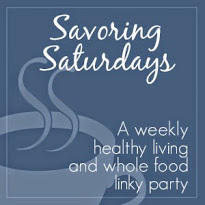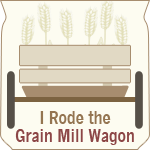If you happen to be on a limited grocery budget (and “limited” looks differently depending on your situation…. let’s just say mine is definitely “limited”!), then you understand how difficult it can be to provide healthy whole foods for your family without dipping into the retirement fund. OK, maybe a slight exaggeration for most of us, but really, it can be very stressful to keep your grocery budget in the black when you’re working with limited funds.
There are a lot of money-saving tools for your grocery budget toolbox these days, and I believe all of them work well together and all deserve a mention on any frugal foodie blog. But there is one valuable tool in particular that doesn’t get a lot of press yet can be super effective in keeping your grocery spending under budget.
I’m talking about Once a Month Shopping (OAMS). Based on the almost-daily google searches that lead people to my blog, I’m guessing I’m not the only one curious about this method of grocery shopping, how it works, and how it saves money. For my regular readers, and for those who found me through Google (Hello! And welcome!), I want to take this opportunity to briefly describe how I do OAMS, and how it can save money in the long run.
Let me warn you before I get started: It takes a bit of discipline, and it requires more planning than even my previous carefully planned weekly shopping trips. In the end, though, I really believe it saves a lot of money… and time! As a busy WAHM with a toddler and infant, I can totally appreciate anything that saves me those precious commodities.
How to Get Started with OAMS
Just Jump In!
I suppose it would be wiser in some ways to actually spend a month noting and recording your family’s eating habits, so that you could start in on the process with that knowledge under your belt to guide your shopping decisions. And I think there are those whose temperament would really do well with more careful planning, and for them, I’d advise to go ahead and take some time to research before jumping in. For most, though, I think it’s better just to get started and learn as you go; you’ll figure out pretty quickly what your family eats and how much of certain items you need to buy to last a whole month.
To reiterate this point, I will mention that shortly after I was inspired to begin the whole OAMS process, I actually did sit down and come up with a whole list of the foods I thought my family would eat in one month, and the approximate cost, and I was so horrified by the total that I dropped the whole idea for several months. When I finally “jumped in” and just did it, I squeezed my eyes shut, held my breath… and it wasn’t nearly as bad as I thought.
So how do you “just jump in”? Easy! You’ll probably be coming off a pretty well-stocked pantry, fridge and freezer like I was, so the first month might even be the easiest. You start by making a list.
Make Your List Wisely
Go around your kitchen, including your pantry, fridge and freezer, and make a list that includes all the following:
- Foods you need that you are already out of
- Foods that you are almost out of
- Foods that you will run out of in the next few weeks AND you know you can’t live more than a day or two without them (chocolate chips are not included in this category. OK, in emergencies, they are.)
If you have access to previous meal plans, read through the meal plans to get an idea of what you ate on a regular basis to help you shape your list.
If your list is largely filled with the following food groups, you should have plenty of food to keep you going for a whole month:
- Meats (Fresh meat, as well as cured meats, like bacon and lunch meat)
- Produce (lots and lots of produce)
- Dairy (milk, eggs, cheese, yogurt)
- Baking supplies (flour, sugar, honey, butter, oil)
- Starches and grains (rice, pasta, oats, etc.)
If your list has a lot of snack foods, junk foods, or processed foods, those are not going to last long, and you will quickly find yourselves hungry.
Fit Your List to Your Budget
There are several parts to this, and depending on how aware you are of your grocery spending, will be more or less difficult than other aspects of OAMS. First of all, if you don’t have a firm monthly budget amount, figure that out right now. You may also need to consider which paycheck you should organize your big shopping trip around. For us, that’s the middle of the month.
Also, keep in mind that while the majority of your shopping is done in one big trip, you’ll need some money for weekly trips to stock up on perishables, essentials you missed in your OAMS, and any loss-leader major sales you can’t afford to skip. For us, that means we spend about 70% of our monthly grocery budget once a month, and spread out the remaining 30% over the remaining weeks (keeping in mind there are sometimes 4 and sometimes 3 remaining weeks before the next big trip).
Once you know how much you can spend, then you need to know how much things will cost. This you can learn as you go, if you don’t already have a firm idea of prices in your area. For the first month, though, just make an estimate of the prices (rounding off higher rather than lower so you’re not surprised in the end). Add up your total estimated cost, and if it’s more than you can spend, go back through your list and cross off anything you can afford to live without or do with less for now. Get rid of any non-essentials for now - if you have any money leftover after buying what is necessary, then, and only then, you can get the marshmallows or the graham crackers or the chips (although you shouldn’t).
Find the Best Price
If you don’t already have a price book - mental, digital, or black-and-white - start one as you go about your first monthly shopping. If you put off OAMS because you don’t have a price book, then you’ll never do it, because it will seem like such a daunting task. However, if you compile it as you go about your shopping, it will help shape your future trips, and you will learn much more about the foods you really want to know where the best price is.
Start looking at every single grocery store circular that comes through your mailbox or with your local paper. Even if you don’t normally go to that store, browse quickly through the ad and see if there are any deals or prices that catch your eye. If you see anything, add it to your list, go to that store to purchase those items, and while you’re at it, make note of their prices on items you buy a lot (milk, eggs, flour, etc.). I was surprised recently to find that a store I never went to very often has absolutely the best bottom dollar price on canned coconut milk, something I use all. the. time!
Don’t forget about the non-grocery stores. I always do some of my shopping at the Walmart Supercenter or Target, because their food prices are often (but not always) considerably cheaper even than grocery store sale prices. The downside is that they don’t double coupons, but even so, the price is often better than I can find elsewhere. Drug stores also always have certain food items on sale, although I’ve found they aren’t usually the healthiest offerings. And along the same lines, don’t forget about the specialty stores - sometimes local bakeries run specials that offer a better price on some baked goods (like really healthy freshly milled whole grain bread) than I can find anywhere, or even make myself. And some ethnic stores (Asian, in particular) often have great deals on certain items unique to their cuisine.
And don’t forget about the world wide web. Now that we live in such a virtual world, we can do our grocery shopping virtually, and I’m not talking about ordering at Safeway for home delivery. No, there’s a lot more variety than that! Amazon.com in particular, often has great deals on groceries, especially through their Subscribe & Save program. I almost always get my brown rice flour through Amazon.com, because they usually have a price that can’t be beat. I’ve also seen excellent prices there for coconut oil and other very healthy products. Also keep your eyes peeled for Groupon-type deals for local food sources… I’ve seen and taken advantage of daily deals for health foods stores, bakeries, organic suppliers and more in my area.
Now That You’ve Started, Keep it Up… and Keep Track of It!
No matter what, once you are done with your big monthly shop, purpose that you are not going to go back to the store except for that weekly replenishment of produce and any other absolute essentials. If you run out of something, make do or do without. You’ll be surprised by how creative you can be… and by how little you actually need what you thought you would die without. So you ran out of rice? OK, eat pasta instead. Or barley. Or that package of quinoa that has been languishing on the shelf for months.
Keep track of how much you spend on foods, and the prices you find as you go about your shopping. Use a spreadsheet or a notebook, but do keep track. That way, when you go to plan your next monthly trip, you’ll have a better idea of where the best prices are so you can shape your list accordingly. Every month, add to this list the new prices you find - I’m still adding to mine because it’s an ongoing, almost-never-ending process.
Also keep track of the food you actually eat. I don’t write this down anywhere, but I make a mental note of how often I have to re-supply certain foods. Some it’s more often, some it’s less. I’ve found that 6lbs of sugar can last over 2 months, but a 32oz container of honey will only last 1 month. I can stretch certain meat cuts into 2 meals, but some never go that far (my DH can plow through any cut of pork like it’s the last meal he’ll ever eat, so I can’t count on anything but a 4lb roast lasting longer than one meal!).
Plan a Menu
What really helps me live off the food I buy once a month is planning for it, and using the food I buy wisely. Posting my weekly menu plan here on my blog has been such a tremendous help to me - so much help that I seriously don’t mind if no one else ever even looks at it but me! (Although I’m always happy if someone finds something useful on my blog.)
Part of using the food I buy wisely means allotting it carefully, so we don’t eat it all up at once, leaving the cupboards bare for the rest of the month. To that end, I’ve come up with some guidelines when developing my weekly menu. In each week, I fix certain foods for only one meal so that I don’t use them all up right away. For example, a weekly meal plan will probably feature:
- one rice dish
- one pasta dish
- one potato dish
- one chicken meal plus one meal made from the leftover chicken
- one other meat-based meal
- one tuna based meal
- one breakfast meal
- etc.
Not only does this help me plan my menu, it helps keep our grocery consumption in check, a win-win!
Of course, there’s a lot more to OAMS than this, and I plan to visit the topic again as time allows. If you have any questions about my experience, please do ask, and I’ll be happy to answer them to the best of my ability!
Now I want to know about your grocery shopping habits! Do you shop once a month or once a week? Or just whenever you need food? Do you have a grocery budget?
Find the complete series here:
How to Make the Most of Your Grocery Budget Dollars: Just Jump In to OAMS!
Five Ways OAMS Saves You Money
How the “Mini Trips” Work
How to Make Your OAMS List, Part 1
How to Make Your OAMS List, Part 2
Sample OAMS Trip
 Hungry for more information about reducing your grocery budget? These tips and many many more can be found in my eBook, Your Grocery Budget Toolbox. It’s available in .PDF format, as well as Kindle and Nook, for only $7.99. Click here for more information.
Hungry for more information about reducing your grocery budget? These tips and many many more can be found in my eBook, Your Grocery Budget Toolbox. It’s available in .PDF format, as well as Kindle and Nook, for only $7.99. Click here for more information.











We are a family of 7 (the kids are 15,13, 8, 6, 4) and we’ve been OAMS for around 3yrs, because my husband is paid monthly I make a menu and leave nights for leftovers & fantastic deals I find on my weekly mini-shops for fresh produce & dairy.
I make a menu and leave nights for leftovers & fantastic deals I find on my weekly mini-shops for fresh produce & dairy.
This plan has become fun for us. We make the menu together, my older kids help me organize my coupons & type the shoppinv list. We make the actual shopping a big event. My husband comes home early, we go out for dinner (the only time we eat out all month) & then we split up into teams at the store.
Our grocery expenditure went from $800/m (with small kids & double couponing stores) to just under $600/m with teens & living in an area where no one doubles coupons!
The biggest benefit is being able to look at the menu, pick a meal, thaw everything & be ready to go.
Thanks for sharing your experience! And saving over $200 on groceries is no mean feat! I’m still working on planning the menu a whole month at a time, or at least putting it in writing. I plan mentally in generics (a little more specific than the list I mentioned above, for example, “brinner” one night, sandwiches one night, pasta salad one night, etc.,), but I’m trying to get into the habit of nailing down a specific menu for the entire month.
Great article! We do a big shopping trip once a month and then fill in over the rest of the month as we need to for perishables. I seem to buy the same things over and over, so I don’t do a monthly menu.
Thanks for visiting my blog and leaving a comment on the fruit crisp.
I am a newlywed, so, I have only been planning meals/shopping/cooking for six months. I feel like I am doing pretty well so far, for someone who never did this stuff before! I try to make a meal plan each week, according to what is on sale, and go shopping once a week. I go to both Kroger and Walmart, because they are both near each other.
The thought of doing a big shopping trip once a month, and planning meals for a whole month is REALLY intimidating, but, since I have done ok with planning so far, I kind want to give it a try! I am slowly doing better at knowing how much things cost, and recognizing good sales. For the first month or so of shopping trips, I wrote down the price of EVERY item as I put it in my cart, and tallied up the total every now and then, because I didn’t want to go over my cash budget and I had NO idea how much things cost!! I still call my mom from the store now and then, asking “hey mom, is this a good sale price on bla bla bla?!” Anyways… the price of things I think is what would be a challenge for me. Can I ask what a price book is? Do you just write down the list of all the foods you buy from the receipt after you get home?
Sorry for such a long comment…. but thank you for this post, I learned so much! Since I feel like a newbie, I am just soaking up info from bloggers and women who have been doing this a lot longer than I have. Thanks for sharing your experience. I am encouraged to try this out… or, at least get started at planning for it.
Elizabeth, good for you, working so hard to plan your meals for your family and all that entails! I guess I should have mentioned in this post, I actually did a 3-month trial of OAMS, before committing to it 100%. I wanted to see if it would work out even remotely, and I also wanted to give it a fair chance, so I thought 3 months was a good amount of time to get an accurate feel for it. It’s been 6 or 7 months now, so it’s working pretty well! You could try the same.
As for the price book, I really should write a separate post about that, but it’s basically just a list of the prices you find for all the foods you buy on a regular basis. To get an accurate price list, you really need to find the prices for all the stores and places where you can buy groceries in your area. I actually originally did mine on an Excel spreadsheet, and I’m slowly rebuilding it on a Google spreadsheet here: https://docs.google.com/spreadsheet/ccc?key=0AkFlJoja0uKFdFdtR3puZks2MXFaZ1UtcktMZXVuZlE&hl=en_US#gid=0
Those are some great points you brought up in your article! We keep a food budget and I usd to do my shopping every week, but for the past several months I’ve switched to doing it every other week (shopping for perishables in between as you do) I keep thinking of switching to once a month but the biggest thing holding me back is my TINY pantry (it’s actually more of a cabinet- not even a real pantry)
Anyway, your post is inspiring me to try giving the once a month shopping a chance and I may have to get creative with where to store the food… Thanks for the post
If it’s any encouragement, I have a tiny closet that serves as my pantry. I can’t really afford to stock up tons of stuff, but I do manage to find places for a month’s worth of most things. My problem is my freezer:( I can’t stock up as much meat and produce as I’d like to in my freezer.
You’ve had a lot of great posts, but I think this is your best yet. I just Stumbled it so I hope you get a LOT of traffic, because there’s GREAT information here. Thanks!
Awww, thanks!
I´m shopping when I need a food, mainly about 2 times at month, I think.
Thanks for this terrific post. I know I am not the only Dad/Husband ever to handle the grocery shopping. But since taking a job 2 years ago that pays once a month I see where my wife and I waste the most. Daily trips to the grocery store. Typical scenario, I get a phone call “I’m making pasta and sauce, can you stop and pick up Italian bread?” So I get the bread and walk out with $20 worth of crap I didn’t need. My wife does the same thing, we’re both guilty. That said, our monthly spending for the family (2 adults, boy 12, girl 9) is often $1,000-$1,200 and that includes groceries, hygiene and detergent items. Awful! I know. So I need help and tips because I’m taking this task on as my own personal liability. My wife insists that everything be organic, wild caught (meats, vegetables/fruits, dairy, shampoos, etc) While I certainly see the health benefits of organics, and taste the difference, we often argue over the $3 gallon of milk versus $7 gallon of organic milk. So I am interested the opinions of you and your readers in 2 areas. Where should my monthly budget be (ballpark)? What should I absolutely buy in organic/natural and what do you think is money wasted?
Good for you, wanting to get a handle on your grocery spending! Daily trips to the grocery store will definitely do you in! If you’re interested in saving money on groceries, it will take some planning and thinking ahead. I’ll do my best to answer your questions. Your monthly budget on food depends entirely on how much money you have, which I know is not a great answer, but it’s the best I can give you. Dave Ramsey recommends that 5-15% of your monthly income go to food. If you are interested in reducing your grocery budget because money is tight or you’re in debt, etc., then you will want to be on the lower end of that range. If you are fine financially and just hate wasting your money on food (and I hear ya!), then don’t feel guilty about being on the higher end of that range. As for prioritizing your money, I would say that if your budget allows, focus on the healthiest meat and dairy products (grass-fed, organic, wild caught, etc.), as well as the “dirty dozen” fruits and vegetables (see a list here: http://christianmommyblogger.com/to-splurge-or-not-to-splurge-that-is-the-question/). Processed organic foods (crackers, cereal, etc.) are still processed, so if you need to shave money on your grocery budget, either buy the conventional versions (if you really have to have them), choose homemade, or do without. Also, do your research - $7 for a gallon of organic milk sounds kind of high to me, although I don’t know what the prices are in your area. I try not to pay more than $5 for a gallon of organic milk. Also, Trader Joe’s sells a middle-of-the-road kind of milk that isn’t organic but is free of rBGH. Many whole-food advocates suggest that this is a better use of your money than going with organic. I’m going to share your questions with my readers, and write a post sharing their answers to give you some more ideas!
I highly suggest that you make a list of meals your family enjoys. Then make a menu (use a pencil). Even if it’s a list of meals you will be eating throughout the month it will help in your shopping list. You’ll have to figure out what prices are good in your area to get a good budget idea. They have a “dirty dozen” list of foods that are best to buy organic, which can help you to decide how to spend your money. Do allow some CASH for a weekly or every other week trip for milk/bread/perishables. I personally allow for $20-25 a week for that, this gives me enough to buy milk/bread and some fresh fruits/veggies and sometimes something extra. Using CASH for this will really force you to stay within that part of your budget. Another thing that helps is to buy what is in season. Don’t spend money on grapes when they are expensive, wait until they are in season and are lower in price.
One of the things about OAMS that has really hit me this past year is really looking into how much we spend on certain items. I have a family of 6 and there for awhile we were going through 3 gallons of milk a week. Did the math on that and went wow! We decided we didn’t want to cut down in that area, so I just suck it up and allow for it. I’m much more intentional on what I spend on what items.
Really the first several months are a learning event, so I don’t know if I would “focus” on slashing the amount you spend just yet. Get it figured out how much to buy of what thing first, otherwise you will quickly learn how to “make do” without that item, which really isn’t that difficult but if your wife isn’t on board she may not like it. You will also learn what things you guys really go through and eat all the time. Once you recognize this, and when see a really good deal on one of those items, stock up (if you have the budget to do so).
I buy a lot of my organic health-type food through a food coop (Azure Standard) online. They have a deliver point that comes to my area about every 4 weeks. I do buy in bulk but it works for me. Our sucanat purchase lasts about a year, my laundry soap I suspect will last 2-1/2 years. The cheese I buy in big blocks, well I shred and freeze and it lasts a couple of months. I buy a case of butter and it’s in my freezer and I’m guessing it’s lasting about 6 months. Buying in bulk like this really helps me to get a much better deal. Keep in mind that the really good deal you get will only be good if you don’t let it go to waste. And whether or not you are able to store it properly.
Once you get a handle on how much to buy, then you can target how to downsize the budget if it hasn’t automatically gone down anyway. How about a “cheaper” meal once or twice a week. There are a lot of cheaper meals that are very nutritious and good.
Great tips…. planning make a world of difference!
Rachel @ day2day joys recently posted..One Year to Live
Each month I print a calendar and use it for meal planning. I know that every Tuesday night I need a quick and simple meal because we have a Bible Study meeting at our house at 6 PM. I know that I take a certain medication that makes me queasy on Friday nights, so my Saturday meals are generally not spicy or hard to digest. It helps to plan the whole month of meals based on our family schedule. Do you have soccer practice until 6 pm on Wednesdays? You might want to plan a meal with leftovers for each Tuesday. Hope this helps someone. I have been doing OAM shopping for 15 years.
Hi! I came to your site though MSM. Thank you so much for your hard work! This is something I have thought of doing, but until now it was just a dream. You give such detail, I am going to dive in and start. I so look forward to trying it out. I HATE shopping. I would so much rather do the bulk one day and follow up with small trips as needed for produce, etc. Thanks again. I can’t wait to get started!
Jamie
Thanks! And I am sure you will love it.
When you say “just jump right in”, did you save up money for that, or how did you have enough money to do oams…it sounds great, especially with my schedule?!!!
In response to one of the posts, In our area, Walmart supercenters price match, so if you bring in a competitors ad, they match the price…beats coupon clipping, anyway, Aldi’s is usually a really good deal too, however, even their prices are inches up, and they don’t take coupons.
Thank you for the information. I appreciate your time and advice
I literally just jumped right in! I started it on the middle of the month, the paycheck that had the most “free” money available.
Excellent advice! I suppose I kind of do OAMS now with the monthly Costco trip and $20.00 a week challenge.
This is great information! I’m on an extremely tight budget and just recently decided to do this - OAMS and weekly runs for produce and sales. I was thrilled to read your post and know that this is really something I can do! I also like having a goal on how to divide up the money as you suggested - 75% towards OAMS and 25% for weekly runs.
I simply jumped in as well - I knew what we used during the month, bought and ran with it. We did okay - with a few days at the end where we were being very creative! I’m on my 2nd month of shopping this way and it’s a learning process. We don’t have much $ for produce this month, but I’ll know better how to divy up the money now.
I created a price book - then simplified it. It was a big process - but eye opening. Based on my research, I took the cheapest prices of what I needed and created a list by store. I managed to fit this onto two 8×11 pages, so I can fit it into one page protector. I accomplished several things with this simpler list - I can see prices, compare them easily when I’m out shopping or find a sale online, and I can use it as my check list each month to see what I need. This is so much easier than my 8 page price book and less clumsy! It’s true that this is an on-going list - prices fluctuate so much. I felt a little compulsive about finding ALL the prices…so I’m trying to find a simpler way that doesn’t seem so overwhelming.
I agree that it pays to look around at prices! I found Spectrum Organic Coconut Oil for $5 at my Walmart and $10 at my Whole Foods - wow! I also found organic shredded coconut through Amazon at 1/2 the price I see it in stores.
It also pays to seriously consider making something on your own. I just started making coconut milk - I paid $1.99 for 4 cups of coconut milk at Trader Joes, and can make it for $0.33/4 cups at home! Great savings for something that takes 5 minutes worth of work - and I wish I hadn’t stalled for so long on making it myself. I also just made coconut milk yogurt and it costs me $0.17/8 oz serving…a huge savings over $1.99/8 oz of So Delicious at the store! My kids have been my guinea pigs - and considering all the yogurt and milk I’m going through, I think they like it just fine! There’s always the issue of time - and I have to say that both the milk and the yogurt were SO simple and easy to do that it’s definitely worth the time and effort. This also helps to divert money I would have normally spent on the milk and yogurt and put it towards organic meat or other foods that are higher in price but better quality.
Yes, I agree with all of this! I don’t know if you read through my series on price lists, but I find them invaluable for OAMS. I actually make mine on google docs and download it to my Android phone. That way it’s always with me and is also edit-able away from home (although I usually just edit it at home). I do my list in the same way. Also, making things yourself is the hugest way to save money. I just bought a Vitamix, so Im going to be experimenting with making my own coconut milk, too!
Fun! I want a Vitamix - I hear such great things about them! Every time I turn on my basic blender I keep my fingers crossed that I won’t burn it up - now that I’ve discovered homemade milk and other things!
I want to fine tune my price list and my menu. I hate menu planning - for some reason. So, I printed a calendar for March and as we eat different things that we like, or are usually on our menu, I write it on the calendar. I think, for simplicity, that I could easily repeat the same meals each month and not have a problem. I’m sure the random, ‘odd’ meal will show up for variety - but for the most part we would be okay.
Thanks for all the great info!! I really admire anyone who does blogging - it’s such a useful tool and I have no idea how any of you find the time to do all that’s required in a day AND blog…but thank you!
I have a day home (day care in my home with 6 kids) and I have a boy 17, girl 15 and a hubby. I find I go through tons of veggies, fruit and milk every week so I have been hesitant to do the monthly shop.
That said, I find that when I shop every week I spend too much money on chips and crap for my family and so I have decided to do one big shop for April 2012. I love the 75 - 25 rule and will implement this.
I live in Canada and we don’t have Trader Joe’s (which sounds amazing) and we don’t have great coupons but we do have “Superstore” which has the lowest prices in my area and I get free groceries as I bank with them as well. I think food prices are lot more expensive up here. I would be happy to get my monthly bill under $1000.
I love to eat out so much! You know how it is, you worked all day (I make breakfast, snack, lunch and snack during the day) and I just hate the thought of making one more meal. I read above that one family only eats out on shop night and I think that is a brilliant idea and will give it a try!
Wish me luck!
Thank you everyone for your great ideas!
Yes, from what I’ve heard Canada is more expensive than here. If you go through lots of fruit/veggies and milk, I think the 75-25 concept will work well for you. Also, I recommend you follow keeperofthehome.org if you don’t already. She is Canadian, and she started the site savingnaturally.com (owned by someone else now) and has a book about saving money on healthy food. You should check her out for some ideas! Good luck!
Found you through Pinterest, and I am loving your blog!
I have been shopping on a monthly basis for years now, since payday in Spain comes but once a month.
It can seem a bit crazy sometimes, but it gets easier with time.
I went to your spreadsheet, and it is pretty good, thanks for sharing it. I don’t know if it’s the same where you are, but here in Spain, the law requires stores to list price per kilo or per liter under the package price. If this is the same in the States, just jot down that price, so you don’t need to list/remember prices for each and every package size and weight of the items you usually buy. Makes calculating a bargain a whole lot easier!
Bulk foods are usually cheaper than packaged, and they are also greener, saving on packaging and all that…I always buy pasta, rice, cereal, dogfood, coffee, birdseed and nuts in bulk. I buy flour and breadcrumbs in bulk from our local bakery. I agree, buying in stores other than supermarkets is often a good idea. The dogfood and birdseed I buy in farm feed and supply stores.
Hope this helps
Hi Annie,
Me and my fiance are generally conscientious of our grocery budget each month, and we USED to coupon too..but I found I ended up buying A LOT of extra junk food b/c of the coupons. We have now refined our foods we consume each week, and only buy those..we spend around 50-60 a week!…I think its a lot. We eat a lot of veggies, and try to be as healthy as possible…. My thought has been to perhaps purchase a second large freezer to store meats in?..its a big investment and costs around 500-600 dollars…do you think its worth it? My kitchen freezer is VERY small….we eat a lot of the foods you listed…chicken and beef, vegtables, yogurts, cereal every day, snacks for our lunches at work…and we blend veggies every night after workouts…I am hoping to get our monthly budget (including produce meats and everything well under 200 dollars)…its just 2 of us! What are your thoughts or suggestions for me?
It sounds like you are doing a great job! I don’t think $200 is terrible for two people, although I agree you could probably do better. Off the top of my head, I would recommend setting up a price list. I have written about price lists extensively here on the blog . If you’ve never done it before, I guarantee you will be surprised by the variance in prices in your area and you will likely find some cheaper sources for foods you eat a lot. Also, consider purchasing in bulk or auto-ship from online retailers like Amazon.com, Vitacost.com, and others. If you can’t get good prices locally, sometimes online is the way to go (and most auto-ship programs offer free shipping.) If you can afford it and have space for it, I think an extra freezer enables you to adopt a lot of money-saving strategies, like making ahead and freezing, and buying in bulk, and more. It will definitely save money in the long run. The final thing I would say is to eliminate as much processed food as you can because in the end, it is more expensive than purchasing whole foods and cooking from scratch .I have a lot more suggestions and details about these different things in my eBook (Your Grocery Budget Toolbox, which is actually on sale right now for 25% off with the code 100days ).
Hi Annie,
Thanks so much for your response! This is very helpful, and this weekend, I started writing out my food/menu plan for the month of Feb….yikes, this took some thought and planning for sure…But after I wrote it all out, I realized how much food I need to buy in one month…I realized how many packs of meats we will need to purchase up front as well…But now that I looking at the list of items, I’m sitting here trying to figure out which coupons to use…and I’m also a little confused b/c if you only shop for grocery items once per month, how do you take advantage of sales each week depending on the specific item you are trying to stock up on…For instance this week colgate toothpaste is on sale for 99 cents! Which is a pretty good price, unfortunately I don’t have coupons for it…but its still much cheaper than the usual 2- 3 dollars it normally is. If I go and stock up on 5 tubes of toothpaste spending 5 bucks, and not using a coupon…is that worthwhile rather than waiting until I get coupons later, AND wait for a sale to hit next month? What do you do? Seems like every week there is a different sale, which would make me go purchase that item in bulk every week…which means I’m not shopping once per month anymore…can you help explain your strategy here?
Hi,
This has been very helpful to read as my family and I are on the tightest budget of our lives and our food assistance was just recently cut. I’d like to start OAMS but how do you start when you don’t have all the $400 at once, since you can’t stop eating to save up the money?
Thanks!
Hi Stephanie! I would look through your budget and figure out when it would be possible to spend that amount of money at once (for us, that was the paycheck at the middle of the month), and the next time that paycheck rolls around, go for it! Or you could try working into it by adding to one week’s grocery budget by pulling from another budget category. Then spend less the next week on groceries, but save as much as you can to spend the following week (once again pulling from another category if you have to). By doing this over the course of a month or two, you should be able to get to the place where you can afford to go for longer periods of time without grocery shopping, and thereby eventually work up to a monthly cycle.
Great idea! Thanks Anne!